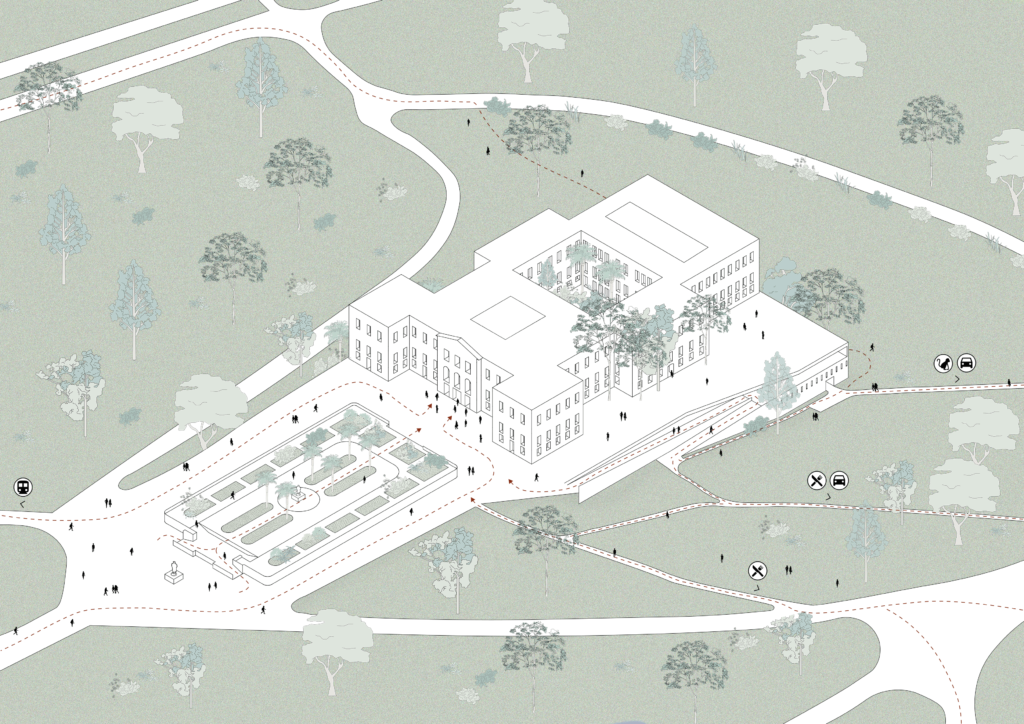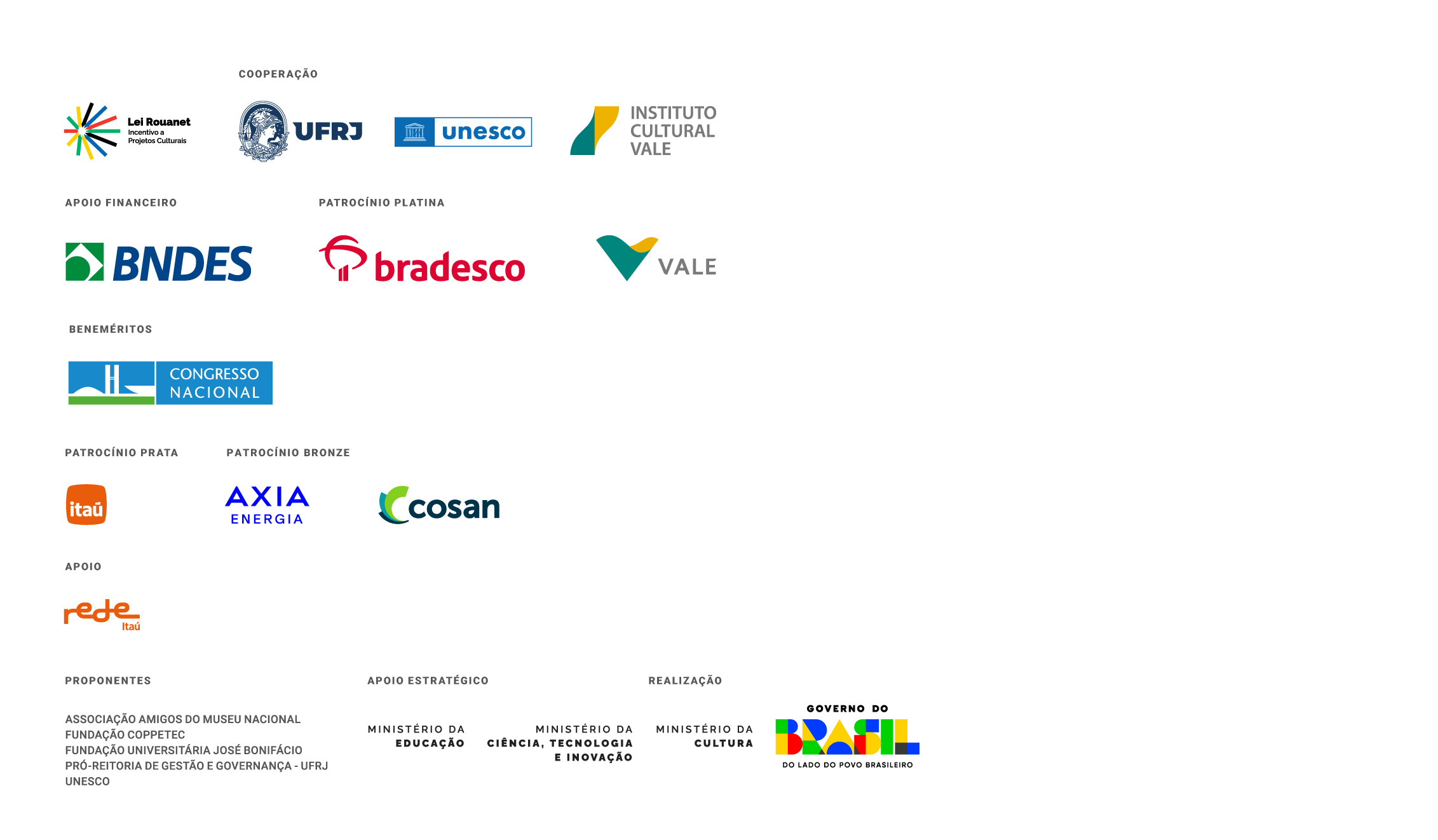Architecture project is in the initial phase
New National Museum will reinforce connections with historical gardens and Quinta da Boa Vista
A museum even more open to the community, integrated into the daily lives of the population of Rio de Janeiro and in dialogue with other historical heritages in the São Cristóvão neighborhood is what Brazilian and world society can expect from the future National Museum/UFRJ.. These are some of the concepts that, added to the respect for the architectural identity and the trajectory of Paço de São Cristóvão, will guide the development of the Museum’s architecture and restoration project.
H+F Arquitetos and Atelier de Arquitetura e Desenho Urbano consortium, winner of a bid carried out by the Museu Nacional Vive Project, will be responsible for developing the project, which includes architectural studies, legislation, circulation flows, sustainability, accessibility, safety, environmental comfort, among others.
Under the immediate coordination of the United Nations Educational, Scientific and Cultural Organization (UNESCO), the bid process had the technical support from renowned experts in the areas of architecture, cultural heritage, engineering and museology; as well as representatives of specialized institutions such as the International Council of Museums (ICOM Brasil)and the Brazilian Institute of Architects (IAB), which were part of a committee to analyze the creative proposals submitted to the bid notice.
“It is with great joy that we announce the result of the process of hiring the company responsible for the architecture and restoration project for the National Museum. UNESCO, which works in various parts of the world in the conservation of museums and their collections, as well as in training specialists in museum institutions, can, once again, use the best of its expertise here in Brazil. This new architecture project will meet the strictest international standards of accessibility and safety, which will make the National Museum a renewed source of culture and history even more integrated into the community. At a time when the world is going through one of the most difficult crises in its history, the search for joint and innovative solutions is paramount to retune, in the shortest possible time, the National Museum to the public,”says Marlova Jovchelovitch Noleto, UNESCO Director and Representative in Brazil.

For Nivaldo de Andrade, national president of the Brazilian Institute of Architects (IAB), “this initiative of the Museu Nacional Vive to contract the architecture rehabilitation project of Paço de São Cristóvão, based on the conceptual and methodological proposals presented by the competitors, is of great importance, as it places the quality of the intervention project and its theoretical-methodological aspects as fundamental criteria. For me, it was an honor to participate in this process, representing the IAB in the Advisory Committee. I must emphasize the technical quality and experience in the subject of all professionals involved in the process, including competing firms. The winning project will certainly be able to not only restore the Paço de São Cristóvão, well individually listed by IPHAN, but also symbolically rebuild the National Museum, now suited to contemporary museum demands.”
The bid notice also contemplated aspects foreseen in the Museum Revitalization Program, developed before the fire by the institution’s servants. According to Alexander Kellner,Director of the National Museum: “We are very happy with the progress made by the Museu Nacional Vive Project, which consists, among others, of restoring and rebuilding the Palace. The architectural design of its interior is currently under development, which will be done in conjunction with several partners, including IPHAN, taking into account what we want to be: an innovative, sustainable and accessible museum of Natural History and Anthropology that values the scientific and cultural heritage and which, through the eyes of science, invites reflection on the world around us and, at the same time, leads us to dream. The choice of the consortium to carry out the architecture project is the first decisive step in this direction.”
For Hugo Barreto, Vale Cultural Institute President Director, and who was also a member of the Advisory Committee, the joint work is fundamental for the excellence of the Museu Nacional Vive Project. “The Vale Cultural Institute, UNESCO and UFRJ have an innovative partnership that goes beyond the financial support for rebuilding the National Museum. The union of expertise of the institutions is a great differential in the governance structure of the Museu Nacional Vive Project. The exchange of experiences and technologies allows us to bring the best of each one to the project. This guarantees the integrated development of each of the stages, improvement and sustainability of the museum’s management and also optimizes performance of multiple initiatives, in addition to guaranteeing the smooth execution and continuity of the planned actions,”he says.
The Dean of the Federal University of Rio de Janeiro (UFRJ), Denise Pires de Carvalho, celebrates this step in the National Museum rebuilding: “We would like to thank the UFRJ public servants involved in the collection rescue and recovery activities, such as the University’s Technical Office team, and the partnership of institutions that have been building with us the mechanisms that culminated in the celebration of an innovative management model, and which associates public and private institutions in order to develop for Brazilian society and for the world what should be one of the best Natural History museums in the world. We will continue together with this goal and awaiting the arrival of new partners. The inauguration of the National Museum’s Research and Education campus is scheduled for 2021, and, in 2022, we intend to inaugurate Block 1, with the celebration of the bicentennial of Brazil’s Independence.”
FURTHER INFORMATION
Architect Pablo Hereñú will coordinate the development of the Project and, on behalf of theH+F Arquitetos/Atelier de Arquitetura e Design consortium, says: “We are deeply committed and excited to contribute to the recovery of such an important space for the country. Our proposal seeks to restore not only the Paço de São Cristóvão, but also the set of open spaces that surround it, expanding the integration of the Museum with Quinta da Boa Vista and organizing a more articulated and inclusive set.” The investment of the Museu Nacional Vive Project at this stage will be R$2,695,212.50. The period for carrying out the hired activities is 18 months.
MUSEU NACIONAL VIVE PROJECT
In response to the enormous challenge of rebuilding the National Museum, the Federal University of Rio de Janeiro (UFRJ), the United Nations Educational, Scientific and Cultural Organization (UNESCO) and the Vale Cultural Institute signed a technical cooperation agreement to implement the Museu Nacional Vive Project, which currently has platinum sponsorship from BNDES, Bradesco and Vale; support from the Ministry of Education (MEC), Federal Bank of Rio de Janeiro, Legislative Assembly of the State of Rio de Janeiro (Alerj) and the Federal Government, through the Culture Incentive Law.





